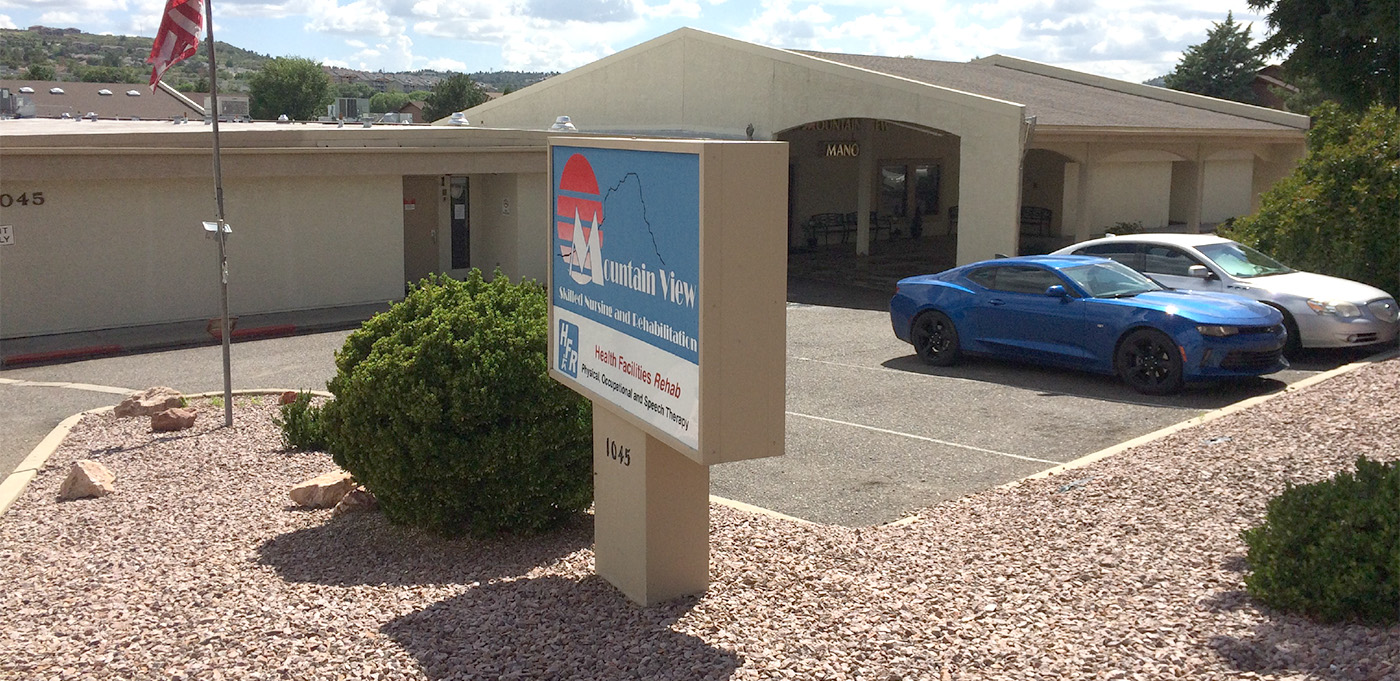The Facility
Mountain View Manor is a 116-bed skilled nursing facility nestled in the Sandretto Hills of Prescott Arizona and has been providing skilled nursing and long-term care services to the community of Prescott and surrounding areas since 1984. Mountain View Manor boasts highly skilled and friendly staff who take great pride in what they do, providing comfort and care 24 hours a day. Teamwork is at the core how they operate, and the interconnectivity of their care solution creates a peaceful atmosphere under the direction of a unified group of skilled providers.
The Solution
A review of the scientific literature, the internet and local suppliers of medical equipment resulted in the selection of SATECH, Inc. to provide SmartCells fall protection cushioning tiles under carpet tile.
Two rooms were selected for the intervention. Each room on a separate day was vacated of furnishings and vinyl cove base. The room residents were cared for in the common areas during the day of the installation. SmartCells cushioning tiles were installed over the existing floor covering, VCT, which had been installed over concrete slab on grade when the building was built. After the SmartCells cushioning tiles were installed wall-to-wall, carpet tile were installed over the smooth SmartCells surface using full-spread pressure sensitive adhesive. Poly-coated SmartCells tiles were installed in the WC. Finally, new cove base was installed around the perimeter of the room and the furniture was brought back into place. Load spreaders were placed under the bed feet and the residents returned to their rooms at the end of the day.
The Abstract
Objective: Falls cause significant morbidity and mortality in long term care facilities. Dual-stiffness flooring (DSF) has previously shown promise in reducing such morbidity in experimental models. This study set out to measure the impact of SmartCells flooring on falls-related morbidity in a nursing home.
Methods: All falls occurring at an Arizona nursing home between July 1, 2008, and December 31, 2010, were reviewed for age, sex, diagnosis of osteoporosis, number of medications, history of previous falls, type of flooring (normal vs DSF), time of day, type of injury, and resulting actions. Fall-related outcomes were compared across room types using chi-square and logistic regression methods.
Results: Eighty-two falls on the DSF were compared with 85 falls on the regular floor. There was a tendency for residents falling on DSF to have less bruising and abrasions, while having more redness and cuts. There were 2 fractures on regular flooring (2.4% fracture rate) and none on the DSF flooring (0% fracture rate).
Conclusions: The fracture rate of 2.4% of falls on the regular floor is consistent with previous reports in the literature, whereas a 0% rate found on the DSF floor is a clinically significant improvement. This suggests that DSF may be a practical approach for institutions and consumers to reduce fall-related injuries. A larger scale controlled study to confirm these encouraging preliminary findings is warranted.
The Results
A retrospective analysis was conducted over a 2.5 year period, comparing falls and injuries on the two SmartCells intervention rooms to falls in similar rooms at the facility. The study was published in JAMDA in 2013.
